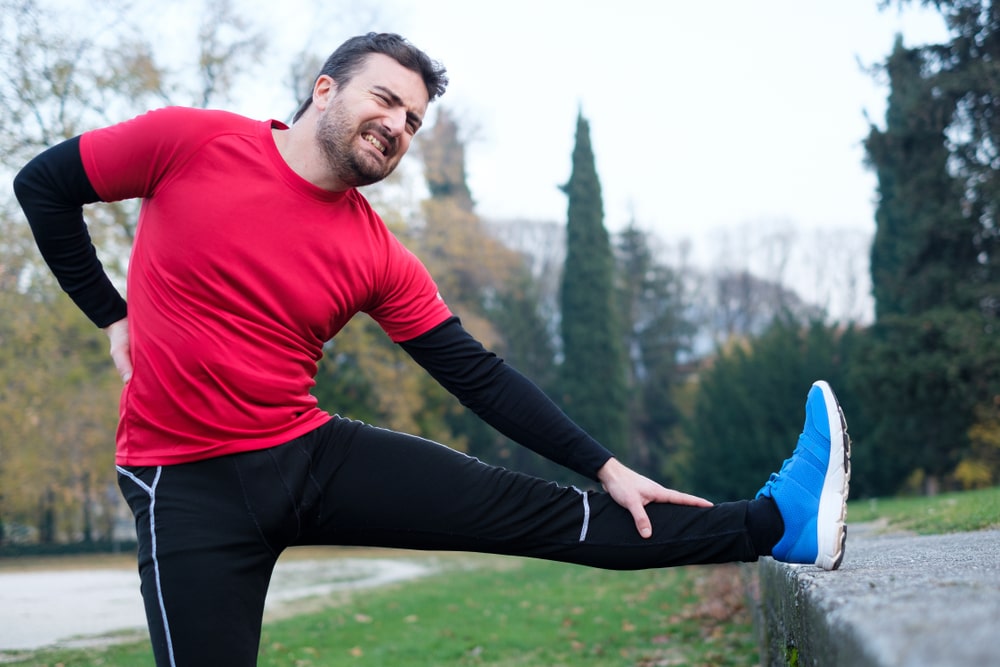
Having sore muscles can make you reluctant to want to go through your regular routines. Sore muscles can make going to your job, doing chores, and even going to sleep a pain.
Some people aren’t quite sure how to address the soreness. They might take painkillers, undergo physical therapy, or try hot and cold treatments. While these can help, one solution you may want to try is getting a massage.
Some people might ask, though, “Does getting a massage help your sore muscles?” Professional massages can reduce swelling, pain, and stiffness. These health benefits are helpful when you want to alleviate sore muscles.
While getting a massage is helpful, you should be familiar with the common causes and types of sore muscles. The more you know about sore muscles, the better you can understand how a massage can help.
Types of muscle soreness
Muscle soreness can be divided into two main categories: Acute and delayed onset.
Acute muscle soreness will occur during physical activity or exercise. It’s typically due to a buildup of lactic acid in your bloodstream. It will usually wear off once you stop the activity, but in some cases, it can take a few hours.
Delayed muscle soreness is where soreness occurs after physical activity or exercise. Symptoms can show up from 12 to 72 hours after your initial workout. If symptoms last more than a week, you should seek professional medical help.
There’s also chronic muscle fatigue, where your muscles are consistently sore, and you may experience chronic fatigue and headaches. There’s usually some underlying condition, like Lyme disease, which causes chronic muscle fatigue. Either way, you should consult your doctor if you experience chronic muscle fatigue.
Common causes of muscle soreness
Muscle soreness can come from a variety of situations. Some of them include the following:
Exercise and other physical activity
Exercising is probably what most people associate with muscle soreness. There are various reasons your muscles might feel sore after a workout. For one, if you don’t stretch properly before an intense workout, your muscles can be stiff and more prone to muscle injury and soreness.
Another common reason for muscle soreness is if you use a muscle group you don’t often use. For instance, if you play a game of soccer, you’re using a lot of lower body strength. If you’re not used to using these muscles, your body might feel sore during or after the game.
Injuries
An injury can easily result in sore muscles. Whether it’s a broken bone, a sprain, or a muscle tear, you may feel sore or even painful muscles.
Repetitive and unnatural movements
When you repeatedly use the same muscle group, it’s not unusual for them to get sore. Similarly, if you move your body in an unnatural position (think if you were playing a game of Twister), you could experience muscle soreness.
Underlying medical conditions
Many types of diseases, illnesses, and infections can cause muscle soreness. Some prominent illnesses include diabetes, thyroid disorders, leukemia, muscular dystrophy, lupus, Lyme disease, and fibromyalgia.
Stress
Stress can cause your muscles to tense up. If your muscles are tense for long periods, you could experience a variety of muscle aches, including neck and back pain.
How a massage can help with muscle soreness
Now that we’ve gone into the different types of muscle soreness and some common causes, let’s look at how a massage can help.
Increased blood flow
When pressure is applied to muscles, it can break up congested areas, allowing for better blood circulation. When blood circulation is improved, it allows for oxygen and nutrients to flow better throughout the body. This can help improve your body’s ability to heal itself.
Increased blood flow from a massage can also help reduce inflammation in the body. Your body will naturally be inflamed as a defense mechanism to protect itself while it heals. However, too much inflammation can cause pain in your muscles.
When blood flow is increased, new blood is pushed throughout the body, which can move stagnant fluid and reduce inflammation.
Releases “feel good” hormones
Getting a massage helps your body release several “feel-good” hormones, such as dopamine, serotonin, and endorphins. These hormones help you relax and ease your body.
When your body is relaxed, it can help reduce the amount of stress, tension, and pain you feel. This feeling helps reduce pain from sore muscles.
Promoted growth of mitochondria
Studies have shown that a massage can help stimulate the growth of mitochondria in the body.
Mitochondria are energy-producing units located within cells. Mitochondria convert glucose into energy which allows cells to function and repair themselves. When cells repair themselves, your body will heal faster and experience less pain.
Massage recommendations?
A Swedish massage can be a great way to address sore muscles. Swedish massages help improve blood circulation and promote relaxation.
If you feel your muscles are still sore, try a deep tissue massage, which can release tension in deeper areas of the body better than a Swedish massage.
You will need to take some precautions if you decide to go with a deep tissue massage. A deep tissue massage is an intense massage that can cause pain and discomfort and can cause your sore muscles to feel worse, especially if you have chronic muscle soreness.
Not getting a deep tissue massage is also advised if you just received an injury. If you do seek immediate relief, you should wait 2 to 3 days or consult a medical professional on when you should be fine to get a deep tissue massage.
Book your massage today
Sore muscles aren’t fun, and getting a massage for sore muscles can go a long way in alleviating your pain. Please keep in mind if you’re experiencing extreme or chronic pain, you should seek help from a medical professional.
If you want Swedish, deep tissue, or other types of massages, consider visiting Happy Head. You can book an appointment online or visit one of our locations.